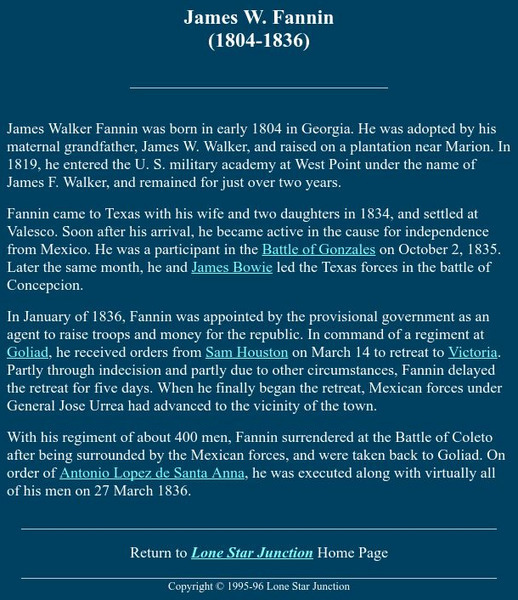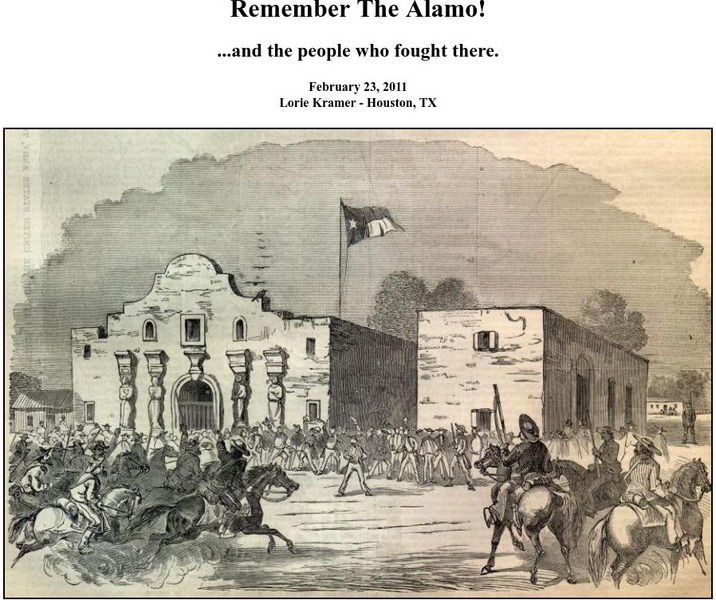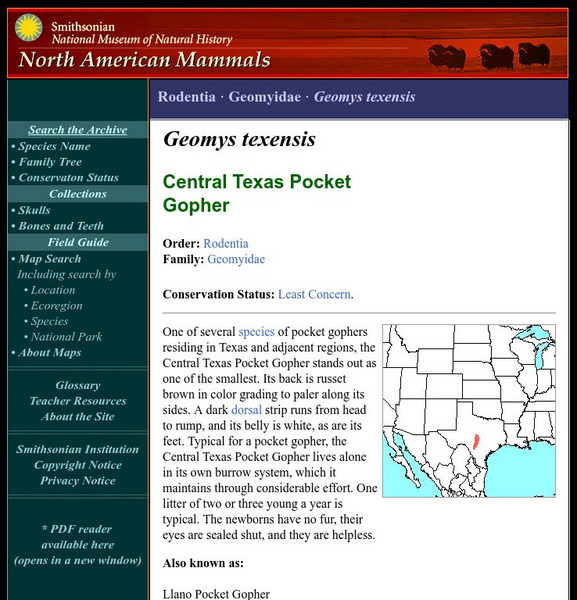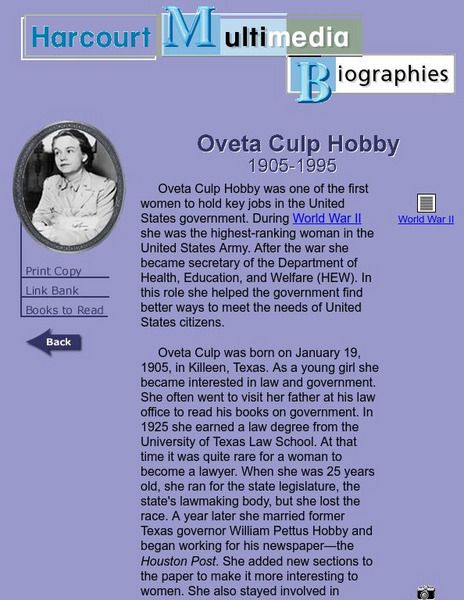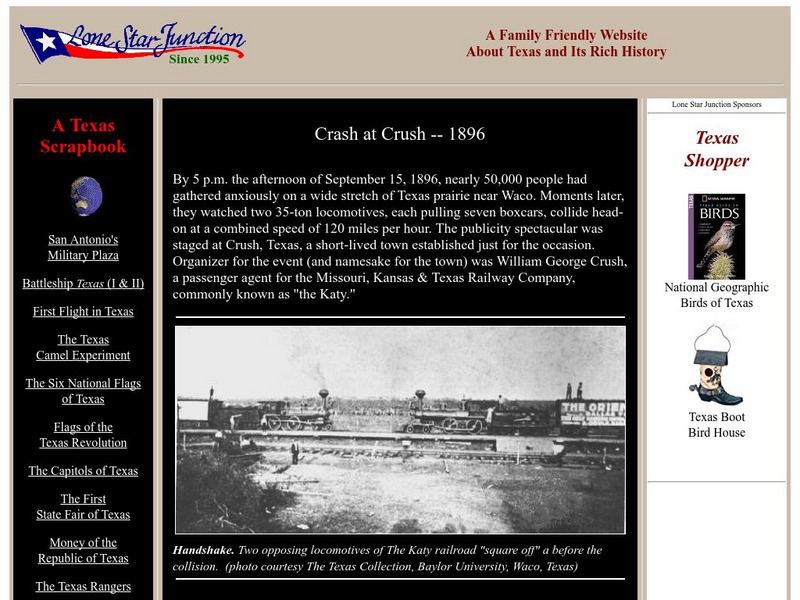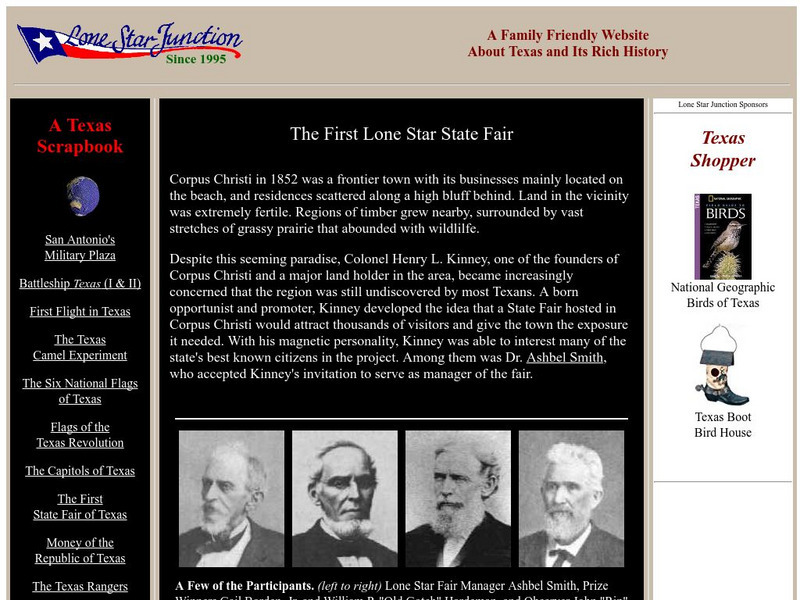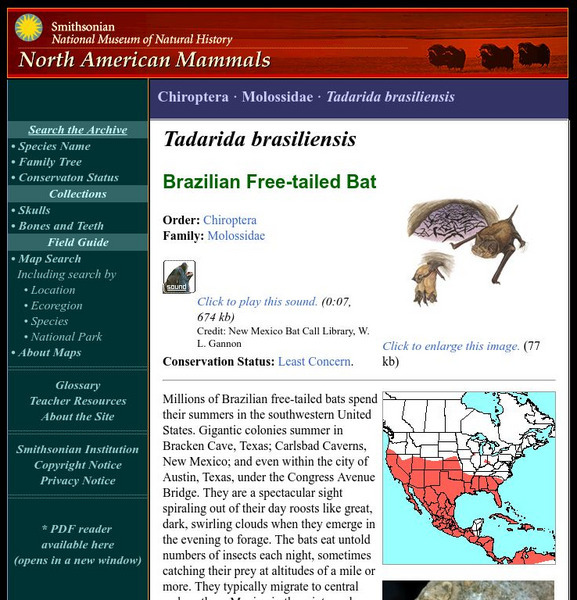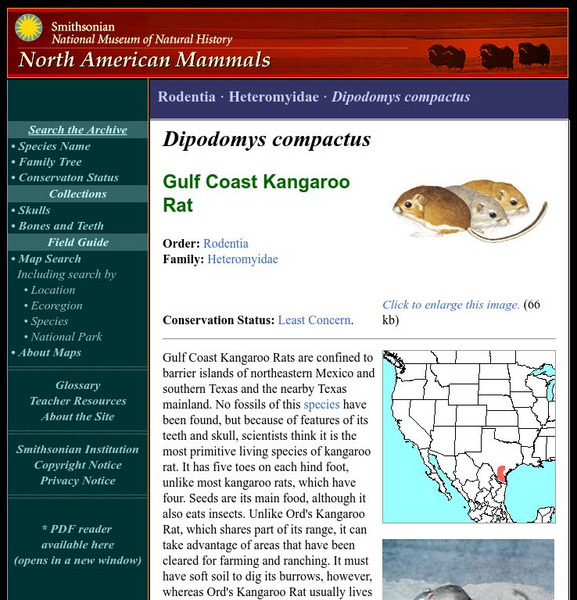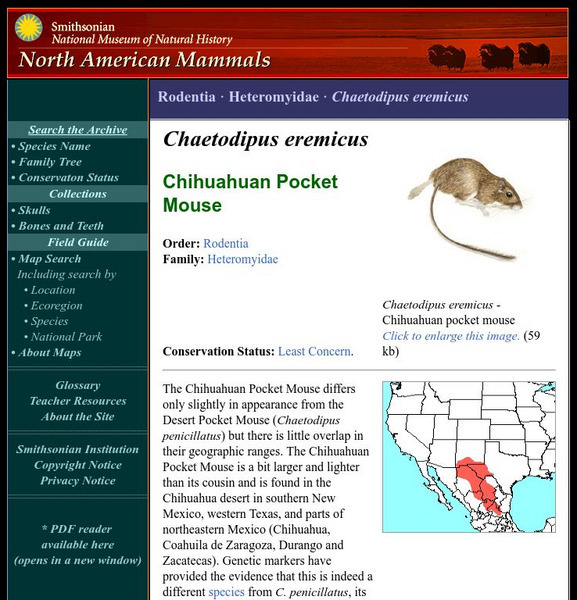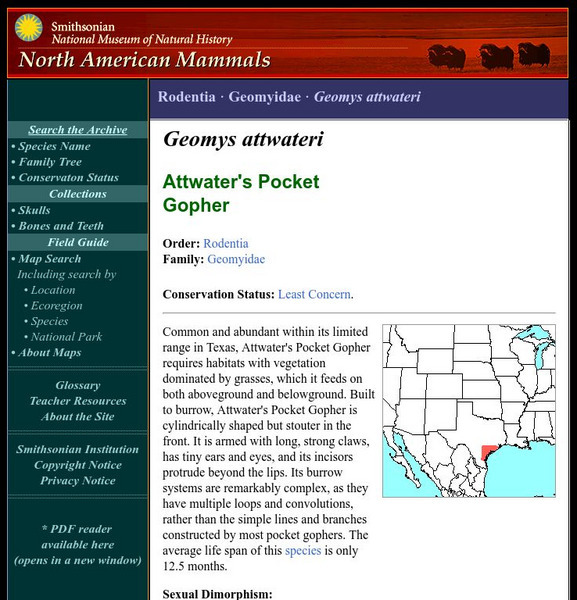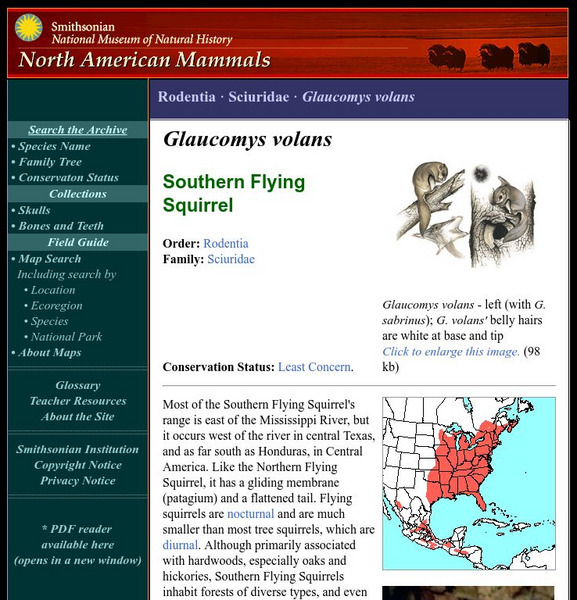Texas Railroad Commission
Texas Railroad Commission: Kids World: History of Coal Use
This one-page summary provides many facts about the history and origin of coal in providing humans with heat and energy.
Lone Star Junction
Lone Star Junction: James W. Fannin (1804 1836)
A brief biography of James W. Fannin that describes the role he played in the struggle for the independence of Texas, and his tragic end at Goliad in 1836.
Lone Star Junction
Lone Star Junction: Francis R. Lubbock (1815 1905)
A short biography of Francis Lubbock, who served a term as Governor of Texas, and later as State Treasurer.
Lone Star Junction
Lone Star Junction: Thomas Green (1814 1864)
A short biography of Thomas Green, who was active in politics and in the military in Texas.
Other
Remember the Alamo! And the People Who Fought There
Lists the names of all the defenders of the Alamo, and points out that the group represented a cross-section of the people of Texas.
Smithsonian Institution
National Museum of Natural History: American Mammals: Llano Pocket Gopher
One of several species of pocket gophers residing in Texas and adjacent regions, the Llano Pocket Gopher stands out as one of the smallest. Its back is russet brown in color grading to paler along its sides. Learn more about the Geomys...
Houghton Mifflin Harcourt
Harcourt: Biographies: Moses Austin 1761 1821
A good resource that provides the life history of Moses Austin, one of the founders of the lead industry in America. Before he died, he had a vision of establishing an American colony in Spanish controlled Texas.
Houghton Mifflin Harcourt
Harcourt: Biographies: Oveta Culp Hobby 1905 1995
Elected to both the Texas and National Women's Hall of Fame, Oveta Culp Hobby led an accomplished life in politics, in the military, and government. here you can learn about her journey.
Lone Star Junction
Lone Star Junction: Crash at Crush 1896
Describes a publicity stunt at Crush, Texas in 1896, that was put on by the Missouri, Kansas & Texas Railway Company. Two locomotives were made to collide head-on before an audience of almost 50,000 people. The event took a bad turn...
Texas A&M University
Texas A&m University: Field Guide to Common Texas Insects: Silverfish
Read a description of the silverfish and its cousin, the firebrat. Learn of their habitat, food source and life cycle.
Bullock Texas State History Museum
Bullock Museum: Chapter Six: The Road to Independence [Pdf]
A teacher guide designed to support a visit to the Bullock Museum, but can be used on its own using available resources. Includes information, discussion questions, activities, and worksheets. The module looks at Texas in 1835-1836,...
Lone Star Junction
Lone Star Junction: The First Lone Star State Fair
The first state fair of Texas was held in Corpus Christi in 1852, with mixed success. Read about the history of this fair and the ambitious people who initiated it and oversaw it.
Lone Star Junction
Lone Star Junction: The Battle of Galveston (1 January 1863)
Describes what took place at the Battle of Galveston on New Year's Day, 1863.
Curated OER
The Six Flags of Texas
Looking for Texas history? Texas parks? Texas city information? Texas government? Texas universities? Find a ready resource here with links to all kinds of basic information on the Lone Star State.
Smithsonian Institution
National Museum of Natural History: American Mammals: Brazilian Free Tailed Bat
Millions of Brazilian free-tailed bats spend their summers in the southwestern United States. Gigantic colonies summer in Bracken Cave, Texas; Carlsbad Caverns, New Mexico; and even within the city of Austin, Texas, under the Congress...
Smithsonian Institution
National Museum of Natural History: American Mammals: Baird's Pocket Gopher
Baird's Pocket Gopher is also known as the Louisiana Pocket Gopher, though most of what is known about its ecology has come from studies of the species near College Station, Texas, and it occurs in Oklahoma and Arkansas as well as in...
Smithsonian Institution
National Museum of Natural History: American Mammals: Gulf Coast Kangaroo Rat
Gulf Coast Kangaroo Rats are confined to barrier islands of northeastern Mexico and southern Texas and the nearby Texas mainland. No fossils of this species have been found, but because of features of its teeth and skull, scientists...
Smithsonian Institution
National Museum of Natural History: American Mammals: Chihuahuan Pocket Mouse
The Chihuahuan Pocket Mouse differs only slightly in appearance from the Desert Pocket Mouse (Chaetodipus penicillatus) but there is little overlap in their geographic ranges. The Chihuahuan Pocket Mouse is a bit larger and lighter than...
Smithsonian Institution
National Museum of Natural History: American Mammals: Attwater's Pocket Gopher
Common and abundant within its limited range in Texas, Attwater's Pocket Gopher requires habitats with vegetation dominated by grasses, which it feeds on both aboveground and belowground. Built to burrow, Attwater's Pocket Gopher is...
Smithsonian Institution
National Museum of Natural History: American Mammals: Southern Flying Squirrel
Most of the Southern Flying Squirrel's range is east of the Mississippi River, but it occurs west of the river in central Texas, and as far south as Honduras, in Central America. Like the Northern Flying Squirrel, it has a gliding...
Smithsonian Institution
National Museum of Natural History: American Mammals: Ocelot
Ocelots occur in a wide range of habitats, from rainforest to savanna to dry, scrubby terrain, at mid- to low elevations from Texas and Arizona to northern Argentina. They are feed on small mammals, and also frequently include birds,...
Smithsonian Institution
National Museum of Natural History: American Mammals: Mexican Long Nosed Bat
The Mexican long-nosed bat feeds mainly on the nectar and pollen of agaves, and is found in Texas in June and July when the plants are in bloom there. Then it migrates southward into Mexico, where it lives in pine-oak forests and...
Smithsonian Institution
National Museum of Natural History: American Mammals: White Ankled Mouse
The White-ankled Mouse is common in rocky areas in both dry and humid regions on the Central Plateau of Mexico and in west and central Texas, southern New Mexico, and Oklahoma. It clearly prefers rocky situations, whether it lives in...
Smithsonian Institution
National Museum of Natural History: American Mammals: Northern Rock Deermouse
Northern Rock Deermice live in rocky outcrops and among boulders in pinyon-juniper-oak woodlands in the foothills of mountains from Colorado and New Mexico south to Texas and northern Mexico. Populations of the Mice are separated from...
Other popular searches
- Military History Texas
- 4th Grade History Texas
- Women History Texas
- 7th Grade Texas History
- History Texas Flags
- Elementary Texas History
- East Texas History
- Texas History Projects
- Texas History Units
- Art History Timeline Texas
- Texas History Major Eras
- Texas History Fourth Grade

